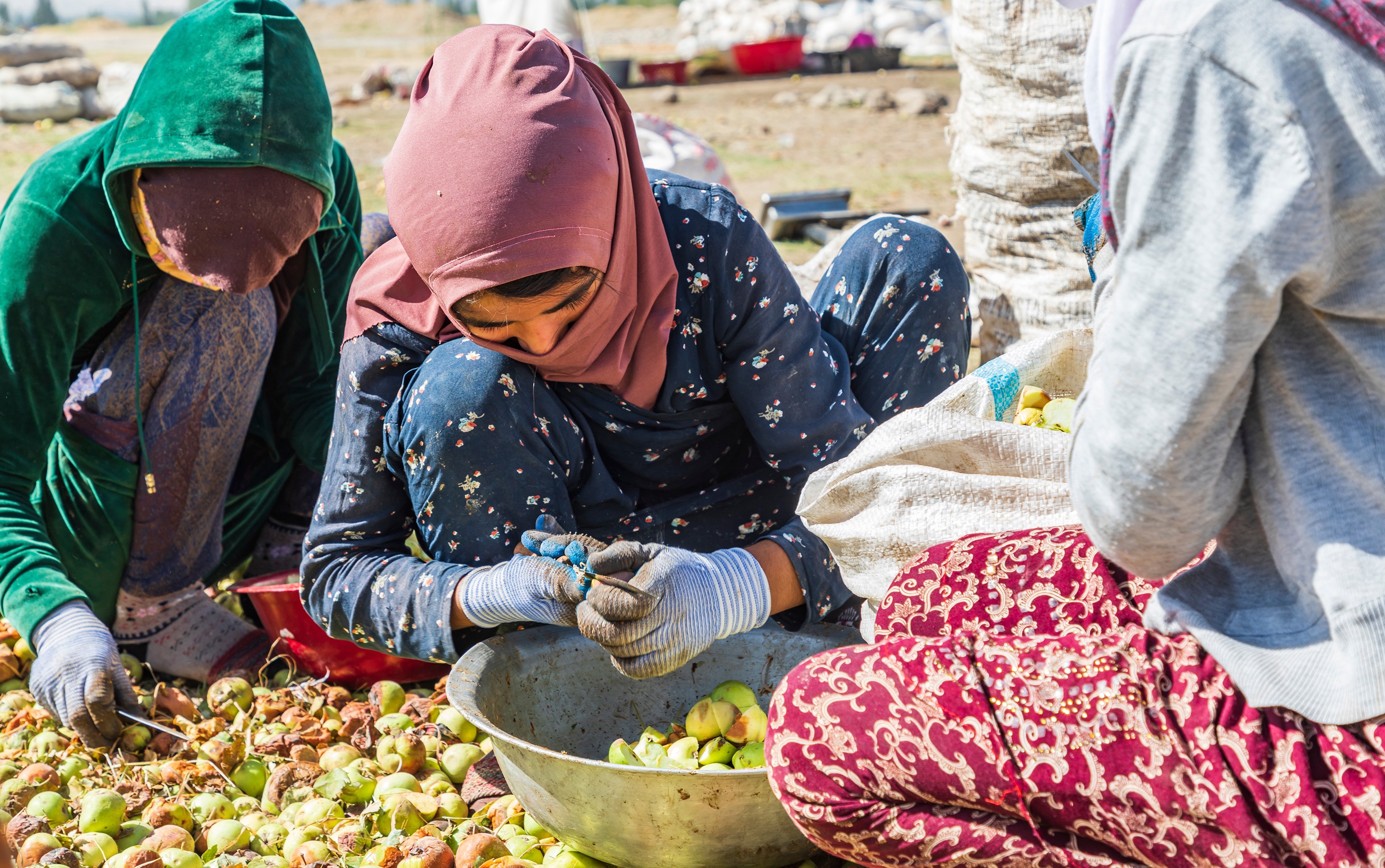Tajikistan is among the lowest-income countries in Central Asia and the world, and agriculture plays an important role in providing rural employment. The remoteness of many of communities means subsistence and semi-subsistence farming predominate, and agriculture is a critical and potentially the only livelihood for many households.
What roles do women play in Tajikistan’s agricultural sector? Does participation in agriculture contribute to women’s agency? These are the questions we try to answer in a new working paper. The study shows that women are involved in many aspects of agricultural production and marketing, but this work in agriculture translates only to a limited extent in further decision making on household economic matters or other areas.
The study is based on an analysis of two quantitative datasets: One focusing on 1,200 rural farm households in USAID’s Zone of Influence in Khatlon Province collected by IFPRI and USAID in 2018; the other, the 2017 Demographic and Health Survey for Tajikistan. For the latter we work with a subset of the data focusing on married rural women (4,873 respondents) nationwide.
Tajikistan’s agricultural economy continues to be influenced by the aftermath of the breakup of the Soviet Union in 1991. Previous legal constraints on non-collectivized agricultural production were lifted. The breakup of collective farms into smaller private farms and shifts in cropping patterns away from major crops such as cotton or wheat significantly altered agricultural production processes and rural employment patterns—and thus farm household organization. Women’s positions in the workforce largely shifted away from paid formal work toward roles as unpaid family laborers or as casual wage workers.
The post-Soviet transition also offered a renewed—if circumscribed—freedom for communities to express traditional and religious values. Many communities witnessed a resurgence of customary norms emphasizing women’s roles as caretakers that constrained women’s mobility and economic opportunities. Farm work, however, is considered compatible with child-rearing.
Finally, the lack of good quality and well-paid jobs at home and the option of better employment opportunities abroad led to substantial outmigration, particularly among young and middle-aged men from rural areas. This altered the demographic composition of the population in rural areas, with women’s share of the agricultural workforce growing.
Gender roles in household farming
The first part of the study assessed women’s roles in agriculture. Among farm households in Khatlon Province, women’s contributions to agriculture are significant. Women account for nearly half of all labor days on household farm, women and men work on all types of crops, and there is no clear gender-differentiation in crop marketing.
In terms of gender differences, however, a few things stand out.
Despite significant male outmigration and likely ensuing higher involvement of women in agriculture, the documented owners of plots are mainly men (80% of plots), and men are more often considered the main agricultural decision maker (81% of plots). Plots owned or managed by women are smaller than those owned or managed by men. More specifically, among dehkan farms—mid-sized farms legally and physically distinct from household plots, and typically the largest type of parcels cultivated by farm households—women’s holdings are roughly a third smaller than men’s.
We also find that men more often engage in growing fruits and vegetables (other than tomatoes or tree fruits). In rural Khatlon these are high-value crops. Finally, we find that men more often engage in forward-contracting, price agreements, and sell larger volumes than women. These latter two points align with the stereotype that men are more involved in agricultural activities with higher renumeration.
Is agricultural work associated with more decision-making power for women?
For the second part to this study, we used quantitative data to assess whether women’s work on and off the household farm is indeed linked with women’s decision-making power, and whether such links differ by sector and conditions of employment—farm vs. non-farm employment and family vs. non-family-based employment. In Tajikistan, rural women often work informally and for low wages.
Based on regression analyses of the farm household dataset, we find that women working on household farms have more decision-making power over minor household expenditures than those not working on household farms. Moreover, this statistical effect is larger than that of any other employment activity. One explanation for this is that women typically work around or nearby the homestead, allowing them to combine the work with household management, including decision-making on minor expenditures.
However, working on the household farm has no significant association with decisions on major household expenditures—suggesting it does little to increase women’s overall agency at home.
We also evaluate the association of agricultural employment with decision-making power among a larger sample of rural women in both farm and non-farm households. Both farm and non-farm employment associate positively with women’s decision-making over large purchases, husband’s earnings, health, and visits to family outside the household. Yet, the size of the association between women’s employment and household economic decisions is smaller when the main occupation is on the household farm vs. off-farm employment.
What next?
Our findings indicate clearly that women in rural Tajikistan are involved in agricultural production and marketing. Yet they also show that these contributions do not automatically associate with more agency regarding household economic decisions, or women’s health and mobility. Further research, based on more powerful and recent data, should help to shed more light on how to leverage women’s significant contributions in the agricultural sector to increase crop productivity and household incomes, as well as women’s individual and household well-being.
Isabel Lambrecht is a Research Fellow with IFPRI’s Development Strategy and Governance Division (DSGD); Kristi Mahrt is a DSGD Senior Research Analyst.
Funding for this work was provided by the United States Agency for International Development (USAID) through the Tajikistan Evaluation and Analysis Activity; and under the CGIAR GENDER Impact Platform with the support of CGIAR Trust Fund contributors. This post is based on research that has not yet been peer reviewed.







